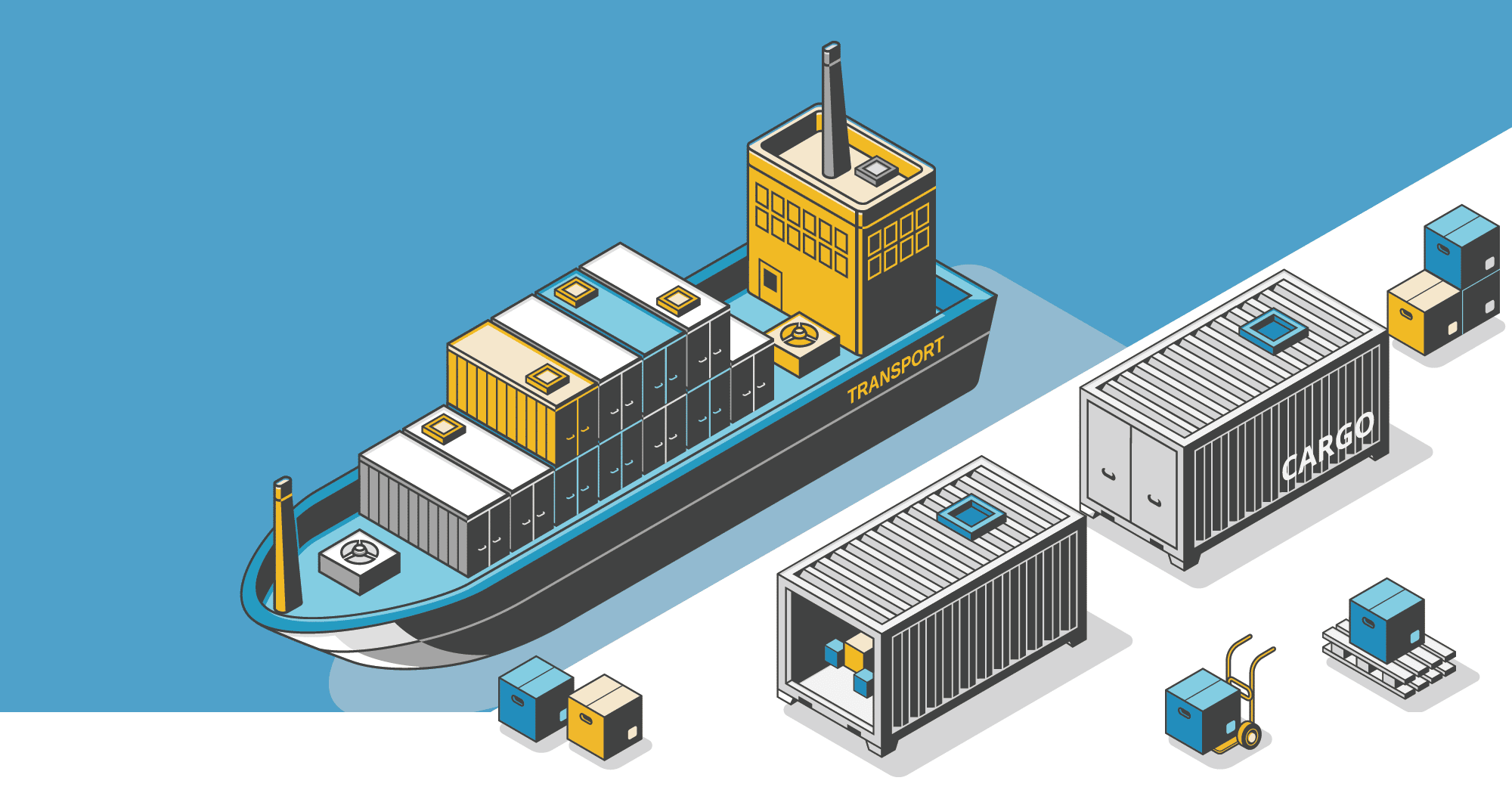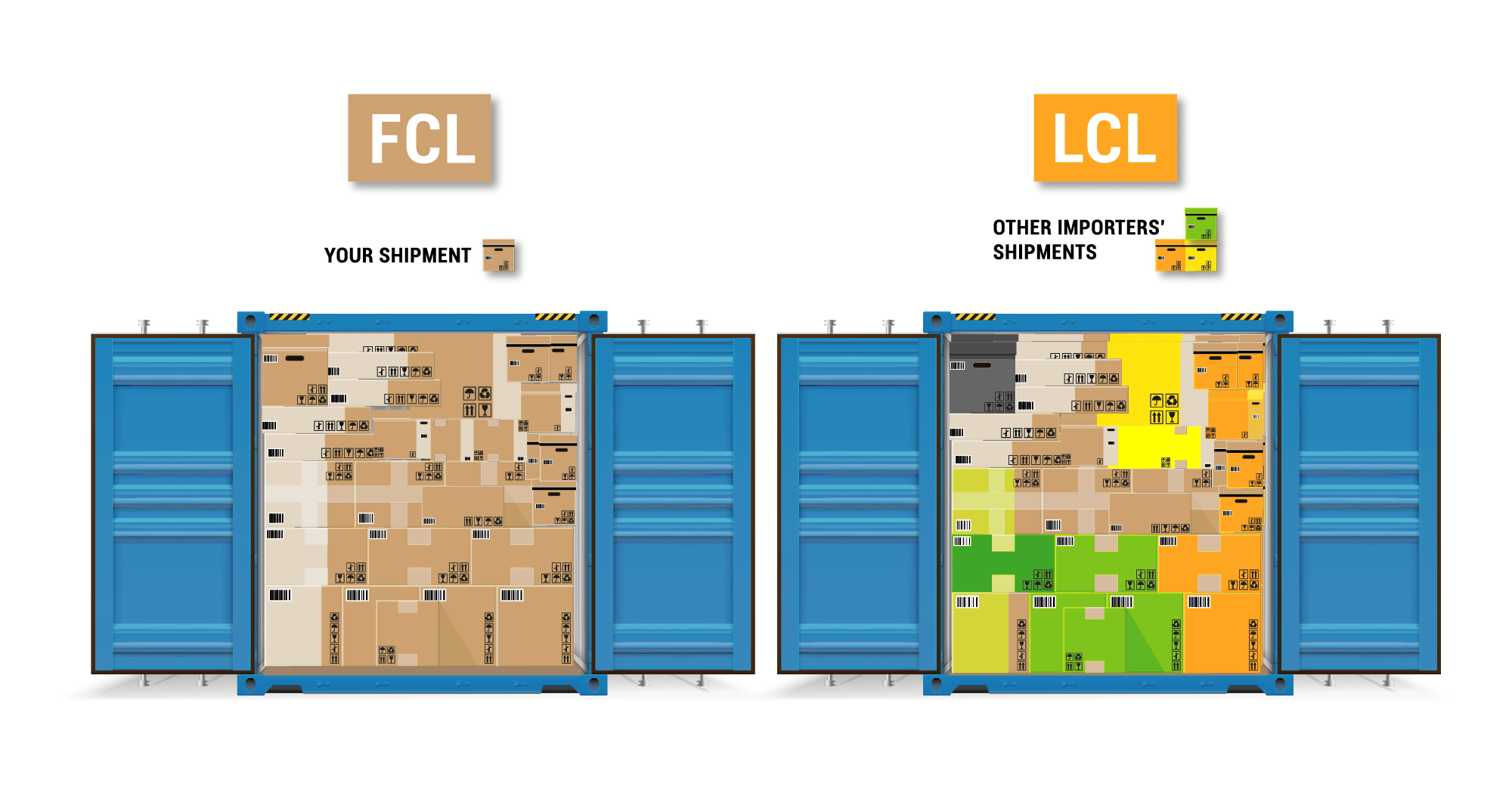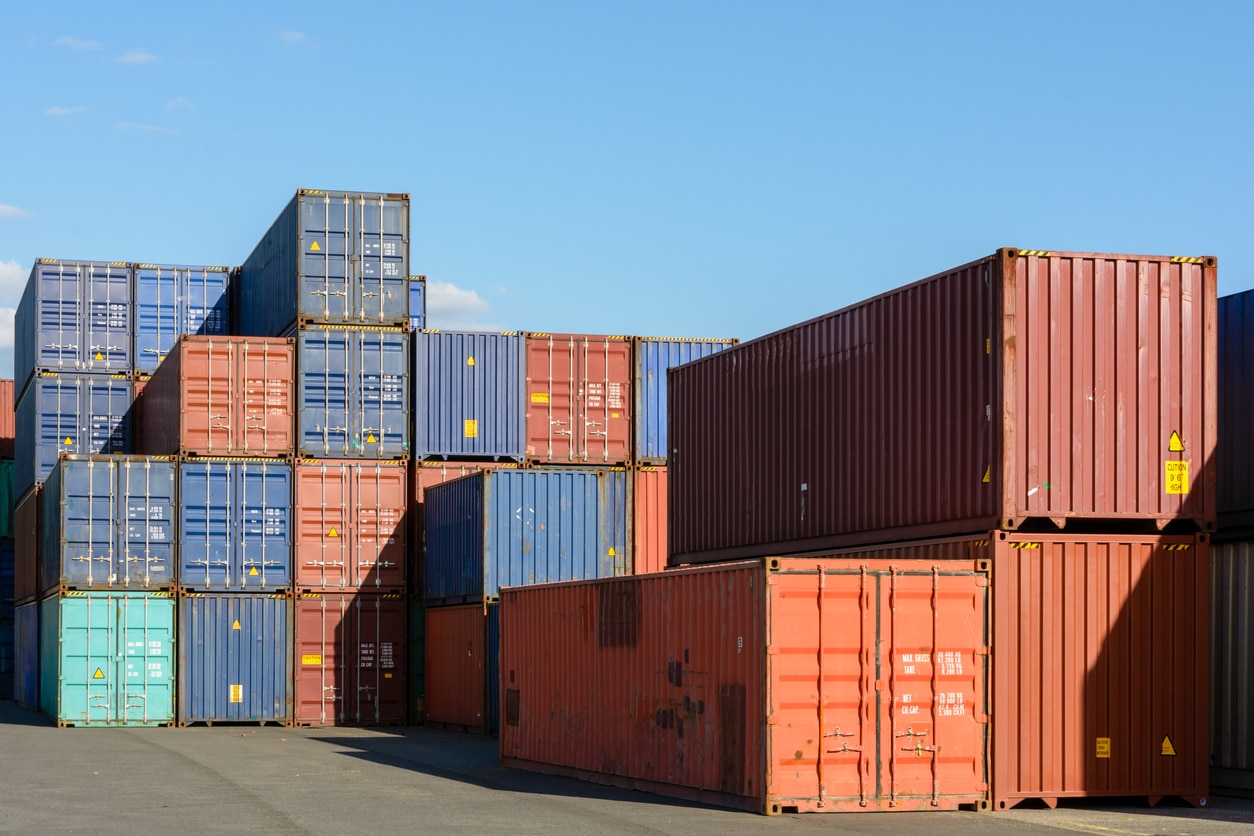FCL Freight vs. LCL Freight

When shipping your goods from China (or nearly any other country) you have a couple of options in terms of sea freight: you can fill up an entire container, which is called Full Container Load (FCL) or you can fill up part of a container, called Less than Container Load (LCL), in which case, you you share it with a bunch of other people and only pay for the space your products take up.
For LCL shipments, your freight forwarder will arrange to have your container filled with other people's shipments (there's no shortage of demand for LCL freight in China!). Don't worry—you don't have to call a bunch of factories in China, asking if they would like to share a container with you.
Also Read: All About International Sea Freight and Step-by-Step Instructions
There are pros and cons to both methods. An exhaustive list would be longer than this, but below are some of the main thoughts along with things which might not be entirely obvious on the surface.
FCL Pros and Cons
FCL Pros
- You and your supplier control entirely how your freight is pack
- Transport costs in your home country can be lower
- Goods are more secure
- Generally better for urgent shipments
FCL Cons
- You need to order bigger/and or your supplier might persuade you to buy more product than you really need
- Generally harder to book during peak shipping season
For me the biggest advantage of FCL is you and your supplier can control entirely how your goods are packed. You're renting the entire container and you're free to do what you like with it inside. You can fill the entire thing with packing peanuts if you want.
For transport from your home port of your container, it generally works out cheaper pound for pound (or CBM for CBM) than FCL (generally in my experience I'll pay around $300 to move a few pallets or $1000 to move an entire container which can hold dozens of pallets).
The biggest downside to FCL is, of course, that you need to fill the container or come close to filling it. I've heard a general rule of thumb is that you need at least 15 to 20 CBM worth of goods to make filling a 20′ container worth it.
If you make an order to fill an entire 20′ container it's not unheard of for your supplier to come back to you after production and say that it turns out all of your goods won't fit in a 20′ container so how about you order a 40′ container worth of goods instead. That said, some sellers opt to fill up an entire 20′ container and then book the excess product under LCL to cut costs.
Related Reading: How to Ship Full Containers (FCL) From China Directly to Amazon
LCL Pros and Cons
LCL Pros
- Good option for smaller shipments
- Reasonably priced
- Easier to arrange during peak shipping season
LCL Cons
- Goods can go missing and/or get damaged more easily
- Pound for pound (or CBM for CBM) more expensive
- Can take longer and more prone to delays
LCL is a great option for smaller shipments, especially below 15CBM. You can even use LCL freight for shipments as little as 1 CBM (1 CBM is the minimum chargeable volume even if you go lower). If you're somewhere in the 5CBM to15CBM range then LCL freight is generally your go to option. And overall, LCL freight is very affordable: around $50 to $150 per CBM generally at the time of writing.
However, there are serious drawbacks to LCL freight, most importantly in terms of loss of control. If you've ever seen YouTube videos showing FedEx or UPS man-handling packages, throwing them around, and cramming them into the back of a delivery truck then you've seen a comparable example of LCL freight.
While it's harder to throw around a pallet full of products than a small box from Amazon, fork lifts can work magic and damage your shipments! With that being said, shipments do tend to be handled with some degree of care.
With LCL shipments there's also a lot more room for things to go wrong. When you have a pallet of goods being crammed in a container with a dozen other people's products, there's an increased likelihood your pallet will go missing or get mixed up with someone else's. It's rare (and hopefully insurance covers any such cases) but it does happen.
LCL shipments can take longer, simply because of the fact that the freight forwarder must arrange to get multiple people's shipments loaded into one container and unloaded once it arrives.
Conclusion
The vast majority of the time, you'll have little choice in how you ship your products. If you have 30CBM worth of goods, LCL freight isn't really an option. If you have 5CBM FCL freight equally is not an option. However, in the border-line cases where you have 15-20CBM worth of goods, it's important to keep the pros and cons of both LCL and FCL freight in mind.






Hi David
I’ve just found your blog, and i am so pleased to find a blog like this detailing how to import from China. I’ve imported a few LCL shipments now but there is always more to learn, so this is great.
I will now be going through some of your older posts and look forward to seeing more new ones!
All the best from the U.K,
Liam.
Hi David,
If a container filled with LCL shipments is pulled over for custom exam, does every LCL shipment share the exam fee? I’ve heard that when a new company starts to import, customs will exam the first three FCL shipments. Is that true? Then what about LCL?
Thank you!
Jin
Hi Jin,
Generally with LCL customs will wait until the shipment has entered the public bonded warehouse to examine. At that point, as the container has been unloaded (part of your fees that you would have paid your freight forwarder regardless), examination is quick and painless. I can’t remember if I was ever charged for this, but if so, it was very little.
In Canada my customs broker tells me a new importer will have their goods examined almost always the first time. This is a not a hard rule, but it’s probably not bad to assume your first time importing it will be examined. I don’t know about other countries, but in Canada and the U.S. I’ve never heard of any rule about the first three times (this seems excessive to me).
Thank you so much Dave for your helpful answer!
Hi David
Being new to this, I feel somewhat inept. Some of the terms I don’t know, such as CBM. Is there a place one can go to find definitions to many of them.
Hoping to get a handle on this so I can import the items interested in.
Thanks
Bruce
Hi Bruce,
CBM is simply cubic meters. Many years ago I picked up a copy of “Import/Exporting for Dummies” which had a glossary of terms, but I’m sure there’s free resources available somewhere on the net which are just as good.
Hey Dave, Good article!
Question 1: You mentioned pallets a few times. Do you palletize most your ocean shipments and why or why not?
Question 2: When using Amazon Global Logistics (AGL) and using FCL do you palletize those shipments or will Amazon accept a floor loaded container?
Sincerely,
Shane
1. Normally for LCL the forwarder palletizes them. 2. They’ll accept both.
What are your thoughts about LCL now. Is it still feasible today?